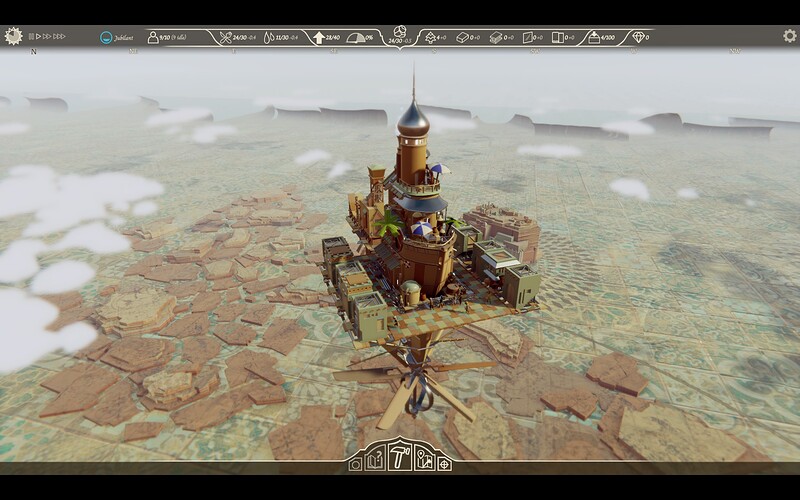Thought I’d come on over to say that I spent around 4 hours playing Urbek yesterday. It’s a charming little builder that has a pleasing amount of depth. I started the tutorial and am still working through it after 4 hours.
Without money, buildings cost a specific resource to construct, provide a benefit and typically have an ongoing resource cost. To pull an imaginary example out of my hat, a house may cost 20 wood to construct, and have a constant cost of 3 food. But it provides 6 people and 20 labor. A factory may cost 50 wood and 100 labor to construct, and a constant use of 20 labor, but provides 100 energy. And so forth.
Right clicking on a building shows hyperlinks detailing possible upgrades to it (for instance, a wooden hut can upgrade to a Village House). Clicking on the upgrade shows the requirements for the upgrade (for instance, a Village House may require 5000 population and 18 people within 3 tiles of the house - when the requirement isn’t met the description will show what’s lacking - so the description may say “requires 18 people within 3 tiles - currently 12” - so you know what conditions you have to fulfil for the upgrade).
If you lack a resource that’s a cost or continuing use, the item you build won’t evolve (for instance, you can build houses - which use food - until your food production goes negative. At that point, you can try to build houses but the foundation just sits there until you get your food production back into the positive. Then the houses will pop up).
The UI is pretty minimal and everything is laid out pretty sensibly. Your building toolbar is at the bottom of the screen. It starts out simple and expands as you unlock more items. As you generate more types of production, icons show up in the upper right corner of the screen. Hovering over a resource icon shows what buildings generate and consume the resource.
There is an overlay and a minimap but I didn’t use either that much. I never felt like I was flailing around without enough information, except when I was trying to see where specific buildings were located (like, when I’m building a school I wanted to see where schools were already placed). As it turns out, there is a spot in the tutorial (that I hadn’t reached yet) that shows you how to locate buildings - it’s sort of clunky though.
There are in-game achievements to unlock certain features (that I think are simply eye candy, I don’t think they change gameplay). So you can try to develop a green city, or a bohemian neighborhood and the like. The unlocks are different vehicles on your roads and specialized house types that have their own appearances.
There’s not a lot of production chains in the game, or rather, the production chains are pretty loose. From what I’ve seen it’s on the order of: coal mine produces 50 coal, coal plant uses 20 coal and 5 wood to produce 30 electricity. I guess that’s a production chain. I feel like the game is more of a balancing act between all the various and sundry resources. As you expand, your list of resources expands, and you have more and more demands on your resource generation to build or evolve the types of buildings you want.
Given that the game is less than $20, I think it’s a pretty good value. I’ve enjoyed my time so far.

